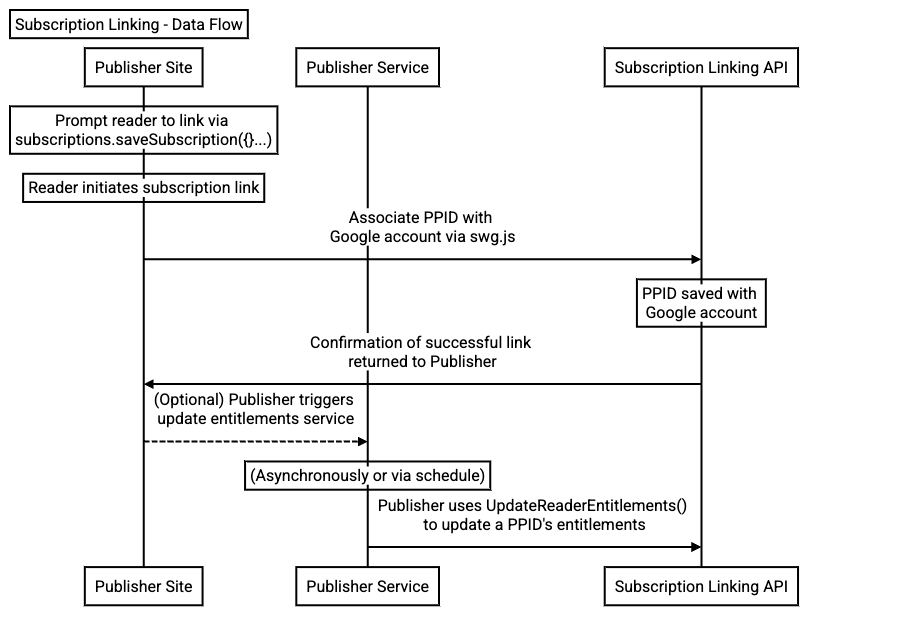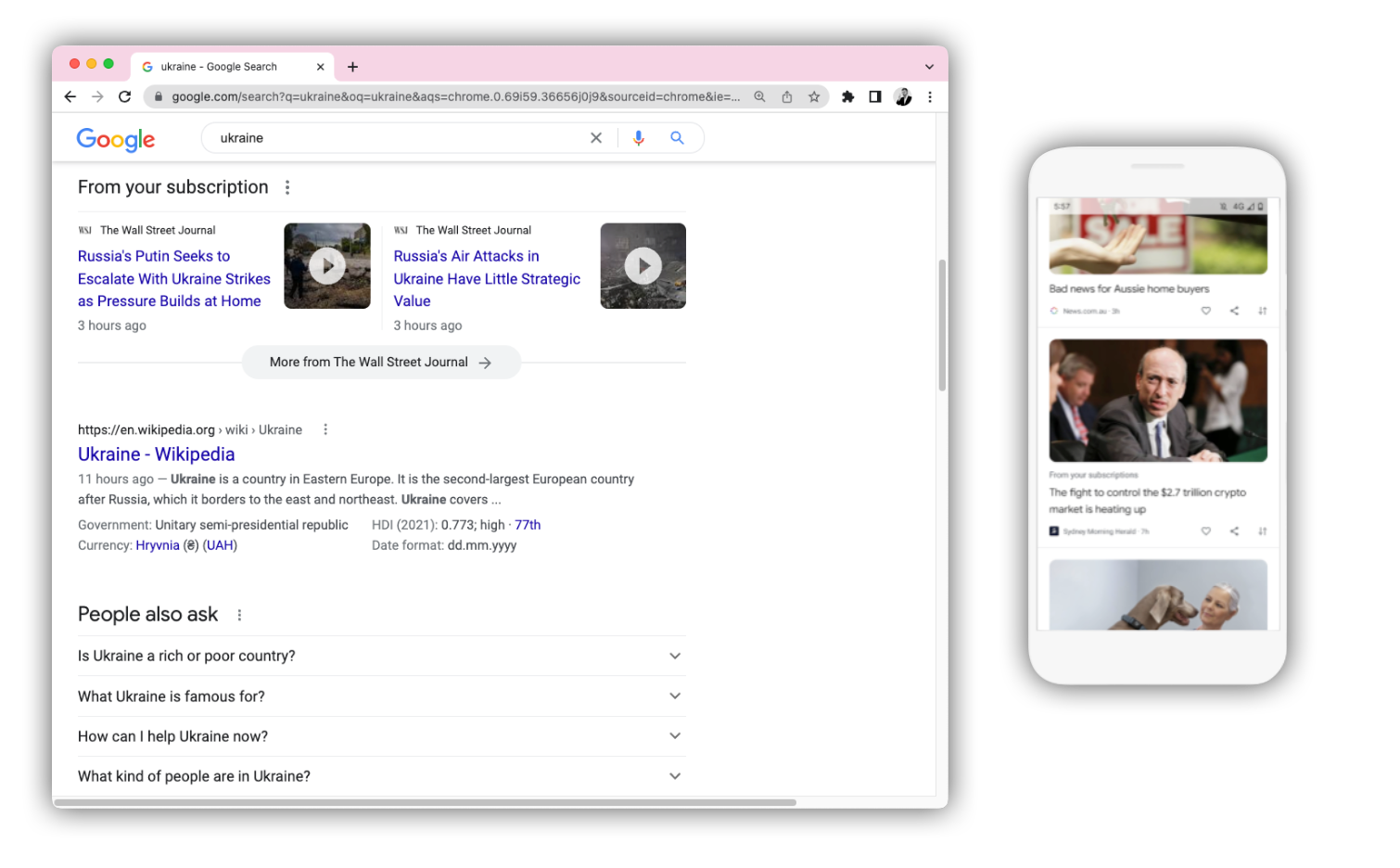
Figura 1: Diagrama de secuencias del flujo de datos de alto nivel del proceso de vinculación de suscripciones.
Para implementar la Vinculación de suscripciones, el sitio del editor debe usar JavaScript del cliente para iniciar la vinculación de los lectores y un servicio del servidor para administrar los derechos de los lectores. Ambos sistemas usan información de la página web alojada, la configuración de Publisher Center de tu publicación y la información de la cuenta de servicio de Google Cloud.
Explicación sobre cómo vincular una suscripción
- El lector con una suscripción pagada o derecho de contribución llega a tu sitio web.
- El código del cliente usa
swg.jspara ofrecer al lector la oportunidad de vincular su cuenta a su Cuenta de Google, de modo que pueda recibir los beneficios de la asociación mediante un botón o un llamado a la acción que diseñes y coloques en tu sitio web. - Después de activar el llamado a la acción (ya sea de forma explícita a través de un clic o de forma implícita como resultado de otra acción o estado), el lector accede a su Cuenta de Google (o selecciona una de las cuentas activas) y otorga permiso al editor para asociar la información del lector con su Cuenta de Google. El editor crea un identificador proporcionado por el publicador (PPID) para el lector como parte de la solicitud, que se guarda con la Cuenta de Google del lector y se usa para las interacciones posteriores con la API.
- Después de otorgar el permiso, el lector vuelve al sitio del editor. El editor ahora puede informarle a Google qué derechos tiene el lector.
- (De forma asíncrona) Los editores enviarán información a Google de cada lector que haya vinculado correctamente su cuenta y usarán sus PPIDs para actualizar el registro de Google de los derechos de los PPIDs. El registro de Google de los derechos de un PPID debe mantenerse actualizado, ya que estos registros se borran después de que se vuelven obsoletos. Un registro se vuelve obsoleto 30 días después de la fecha de vencimiento del registro y, luego, se borra definitivamente.
Beneficios
Cuando un lector visita el sitio de un editor que incorporó la vinculación de suscripciones y pagó una suscripción o una contribución en ese sitio, puede vincular su cuenta del editor con su Cuenta de Google. Esos lectores pueden aumentar la visibilidad del contenido de esta publicación en los productos de Google, como la Búsqueda y Descubre. Esto permite que los lectores maximicen el consumo de contenido de las publicaciones que pagaron. Los lectores pueden desvincular su cuenta del editor de su Cuenta de Google en cualquier momento o mediante una acción proporcionada por el editor.
Resumen de los beneficios para lectores
- Los lectores buscan cualquier contenido, noticias o no, y ven la lista "De tus suscripciones".
- Los lectores interactúan con Descubre (ya sea en la pantalla principal de Android o en iOS en la app de Google, Chrome o a través de un widget de pantalla principal) y pueden ver "De tus suscripciones" como una sección en Descubre.

Figura 2: Captura de pantalla del módulo "De tus suscripciones" en una página de resultados de búsqueda en una computadora y un dispositivo móvil.
Beneficios para el editor de una suscripción vinculada
- Una configuración del servidor más eficiente y duradera para la administración de cuentas
- No requiere la creación de un IdP público de OAuth ni un extremo de derechos, como se requería en versiones anteriores de la vinculación de cuentas
- Se mejoró la participación y la retención de los usuarios, ya que se mostró de forma más clara el contenido de la publicación en las páginas de resultados de los motores de búsqueda de Google.
